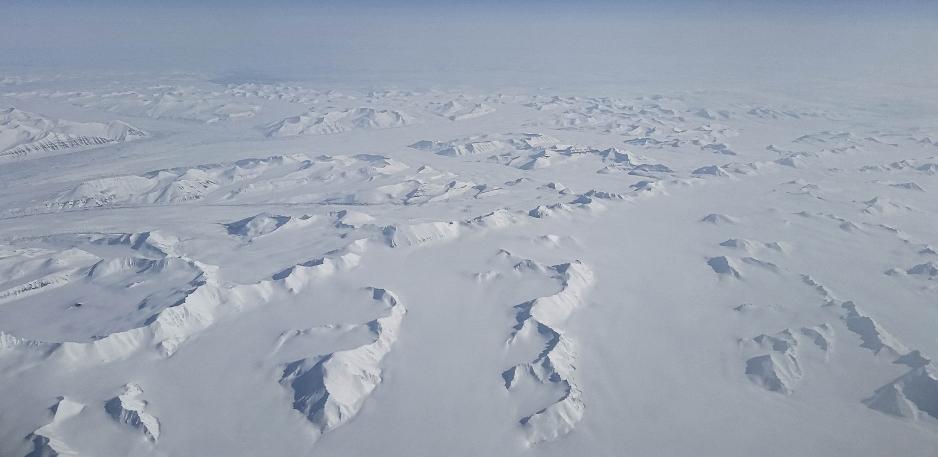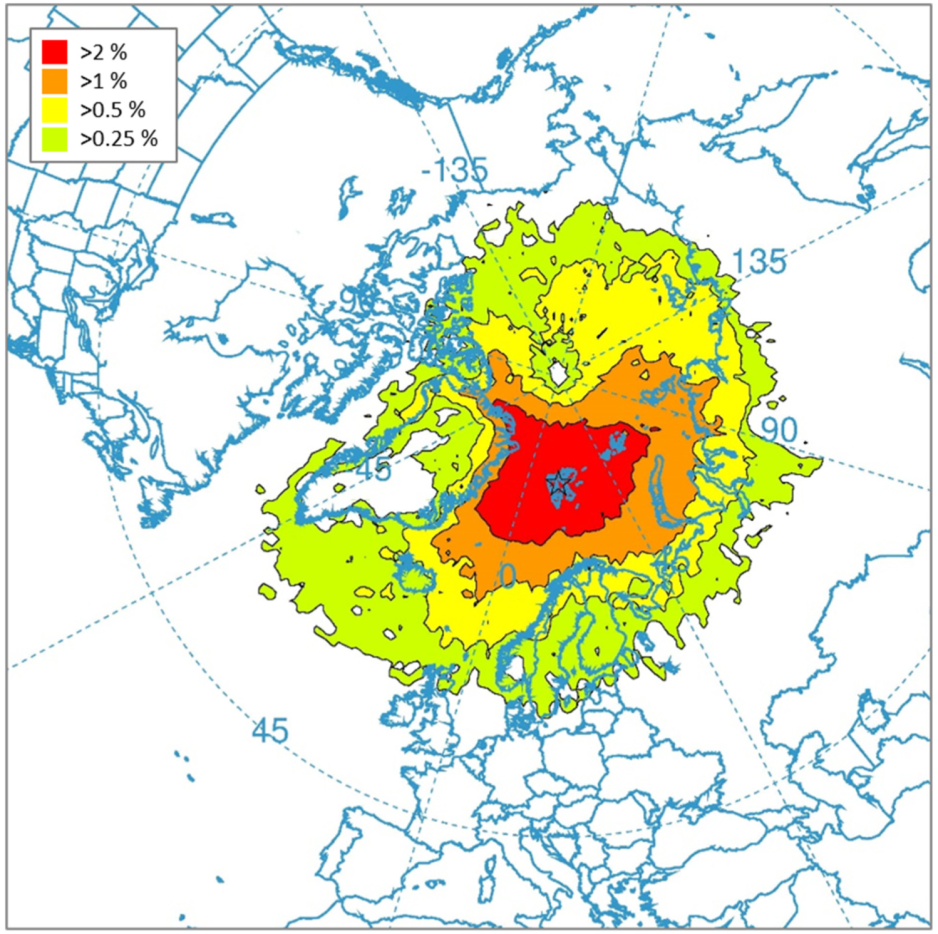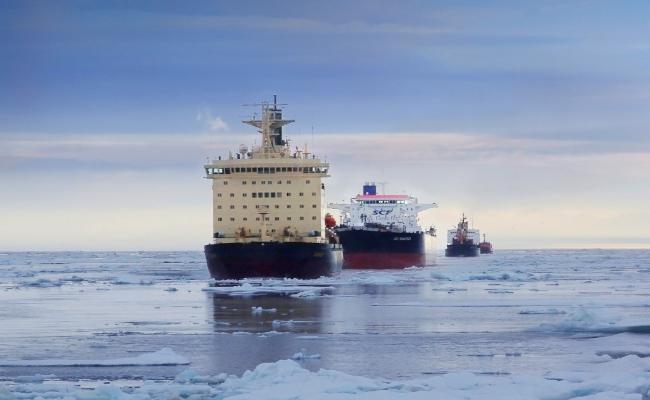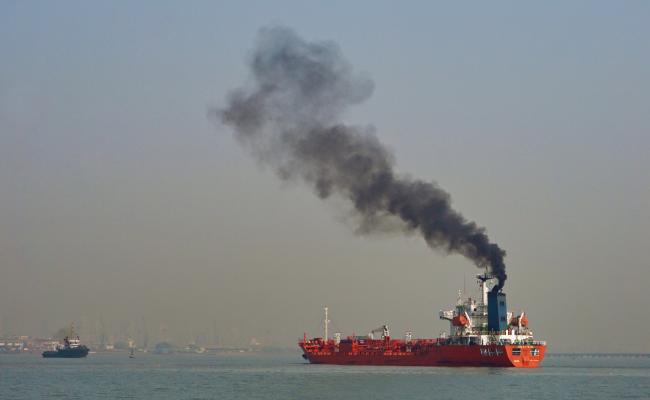Scientists Find High Levels of PFAS ‘Forever Chemicals’ in Svalbard Ice Cap

Aerial photo of the Svalbard ice cap. (Source: Os Putos under CC BY-NC-ND 2.0)
A new study finds high levels of “forever chemicals” in a Svalbard ice core. Seasonal ice melt subsequently washes the toxic compounds into the fjords and surrounding ocean where they enter the food chain.
A new study by a group of international researchers led by Oxford University has found high levels of Per- and polyfluoroalkyl substances (PFASs) in a 12.3m ice core taken from the remote Lomonosovfonna ice cap on Svalbard. The researchers targeted 45 kinds of PFAS and were able to find and identify 26 of them in the high-elevation ice sample.
PFAS are synthetic compounds developed in the second half of the 20th century for use in water-resistant materials, including Teflon, and water-repellent clothing. By some measures 75 percent of water or stain-resistant clothing contain PFAS.
In more recent years scientists have studied their biotoxicity to humans and other mammals. Due to their long lifetime their effects are often cumulative. They are colloquially also referred to as “Forever Chemicals” as, once deposited in the environment, they persist for very long times.
Among the health impacts to humans and wildlife, scientists have identified increased rates of some cancers, reduced infant and fetal growth, infertility, and high cholesterol. Some jurisdictions have begun to develop future bans of PFOS.
In addition to PFAS, the authors also searched for a subgroup known as fluorosurfactants and are often identified by the acronym PFOS or PFOA. The study confirms previous results, e.g. a 2021 study by Lancaster University, which found these chemicals in remote parts of the Arctic.
Transported to Svalbard through atmospheric processes.
Ice cores as historical record
The study makes use of the method of using ice cores to collect a historical record of pollutants or concentrations of particles in the atmosphere. The authors state that “Svalbard ice cores have been shown to provide a valuable record of long-range atmospheric transport of contaminants to the Arctic.”
The researchers identified twelve distinct layers in the ice core indicating that it contained ice that accumulated between 2006-2019 ± 2 years. The study also notes seasonal variations, with more accumulation during the summer months.
The authors were able to identify a broad region of Northern Europe and Asia, Greenland, Canada and most of the Arctic Ocean where the PFAS could have originated and were subsequently transported to Svalbard through atmospheric processes.
Since there are only limited population centers or industrialized areas in Northern Canada and Greenland, the authors speculate that much of the PFAS originate in the Eurasia region and were transported to Svalbard as part of air masses.

An air mass trajectory frequency plot from the study showing which air masses ended at the Lomonosovfonna drilling site 2007–2018. (Source: William F. Hartz et al.)
More PFAS into the ocean
This issue of PFAS in the Arctic is of particular importance as climate change is occurring at four times the rate in the region as the rest of the world. This results in more seasonale ice melt, which in turn results in more PFAS flowing into the ocean.
Here they are absorbed by living organisms as small as plankton and fish and as large as seals and polar bears and enter the ecosystem. For many of the PFAS no safe levels have yet been established.
In an interview the study’s lead author noted that Arctic mammals, including polar bears, are known to have high levels of PFAS in their bodies.
The authors also highlighted the need for further study to determine how and which particular PFAS get redistributed during the summer melt season.
The study notes that “PFAS are likely ubiquitous in seasonal snow and post-industrial accumulation on glaciers in Svalbard” and that it was important to understand glacial runoff into the fjord environment around Svalbard and the greater Arctic and to what degree they enter the food chain.



